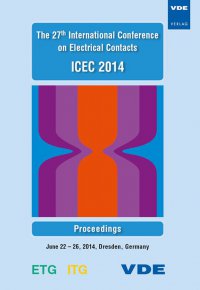Investigations on the threshold range of connectors in conditions of engaging and separating with electrical load
Conference: ICEC 2014 - The 27th International Conference on Electrical Contacts
06/22/2014 - 06/26/2014 at Dresden, Deutschland
Proceedings: ICEC 2014
Pages: 6Language: englishTyp: PDF
Personal VDE Members are entitled to a 10% discount on this title
Authors:
Hornung, Alexander; Berger, Frank (Electrical Apparatus and Switchgear Group, Technische Universität Ilmenau, Ilmenau, Germany)
Freudiger, George; Kummerer, Daniel; Ledermann, Tom (Research and Development, Multi-Contact AG, Allschwil, Switzerland)
Abstract:
Plug-in connectors (pins and sockets) are devices used to establish a mechanical and electrical connection between electrical circuits. Often, these connectors are used under extreme conditions (hot plugging), far beyond the manufacturer's qualifications. In some cases a failure of the connection is the result. The aim of this research is to gain knowledge about the long-term behaviour of connectors under standardized test conditions and to research threshold ranges in hot-plugged applications. A central point of interest is the influence of mechanical, electrical and other parameters on their operational capability. The authors stressed the connectors in numerous tests where they have been switched under different current loads at low direct voltage. During break operation arcing could be observed as expected with both a high speed camera as well as in measured voltages and currents. The arc energy is a function of velocity and current and varies in the experiments. Increased arc energy leads to a significant reduction of product lifetime as the connector resistance reaches the crucial limits after fewer cycle times. This paper presents selected experiments and explains the effects of different arc energies on the contact surface.


